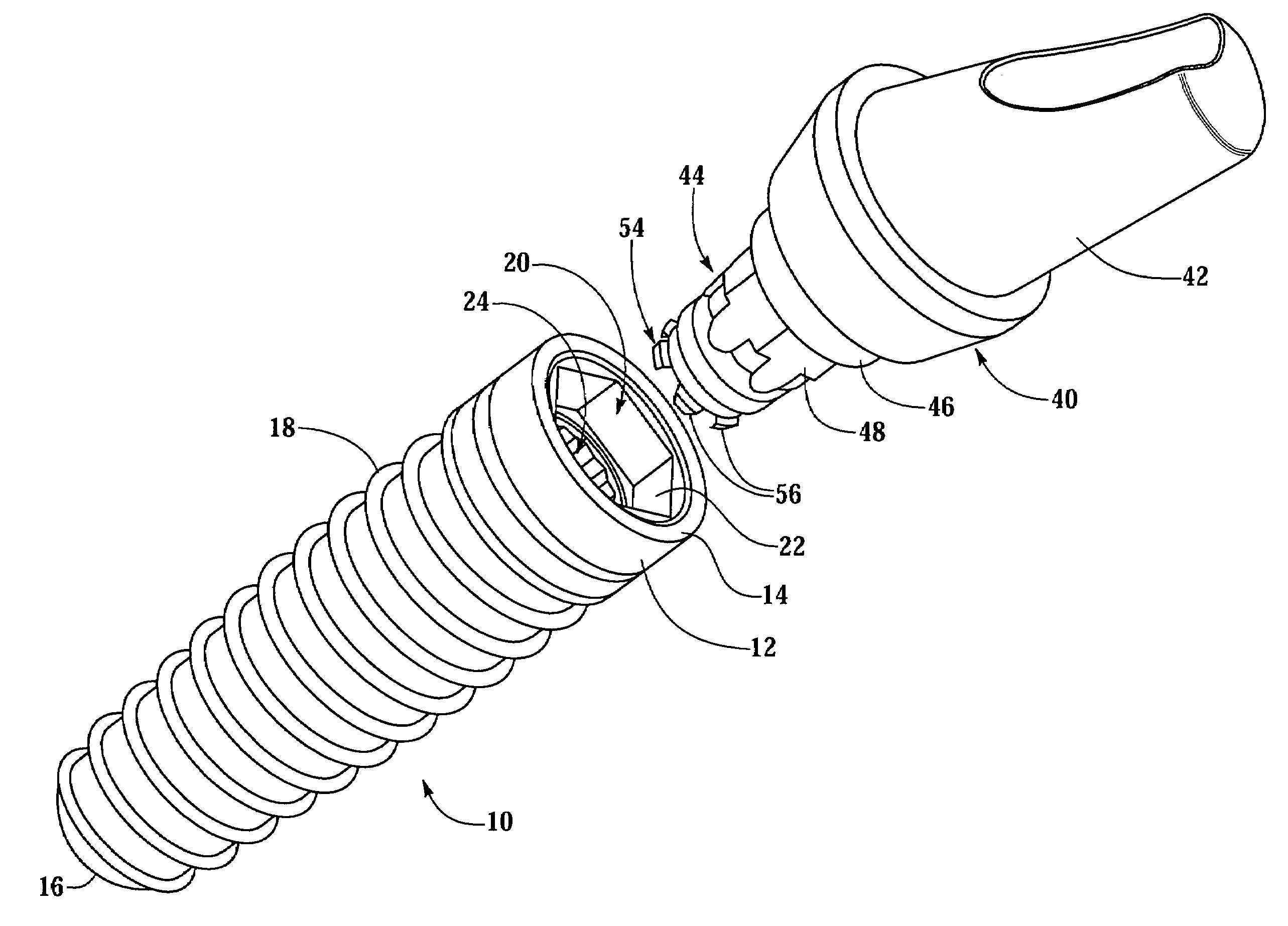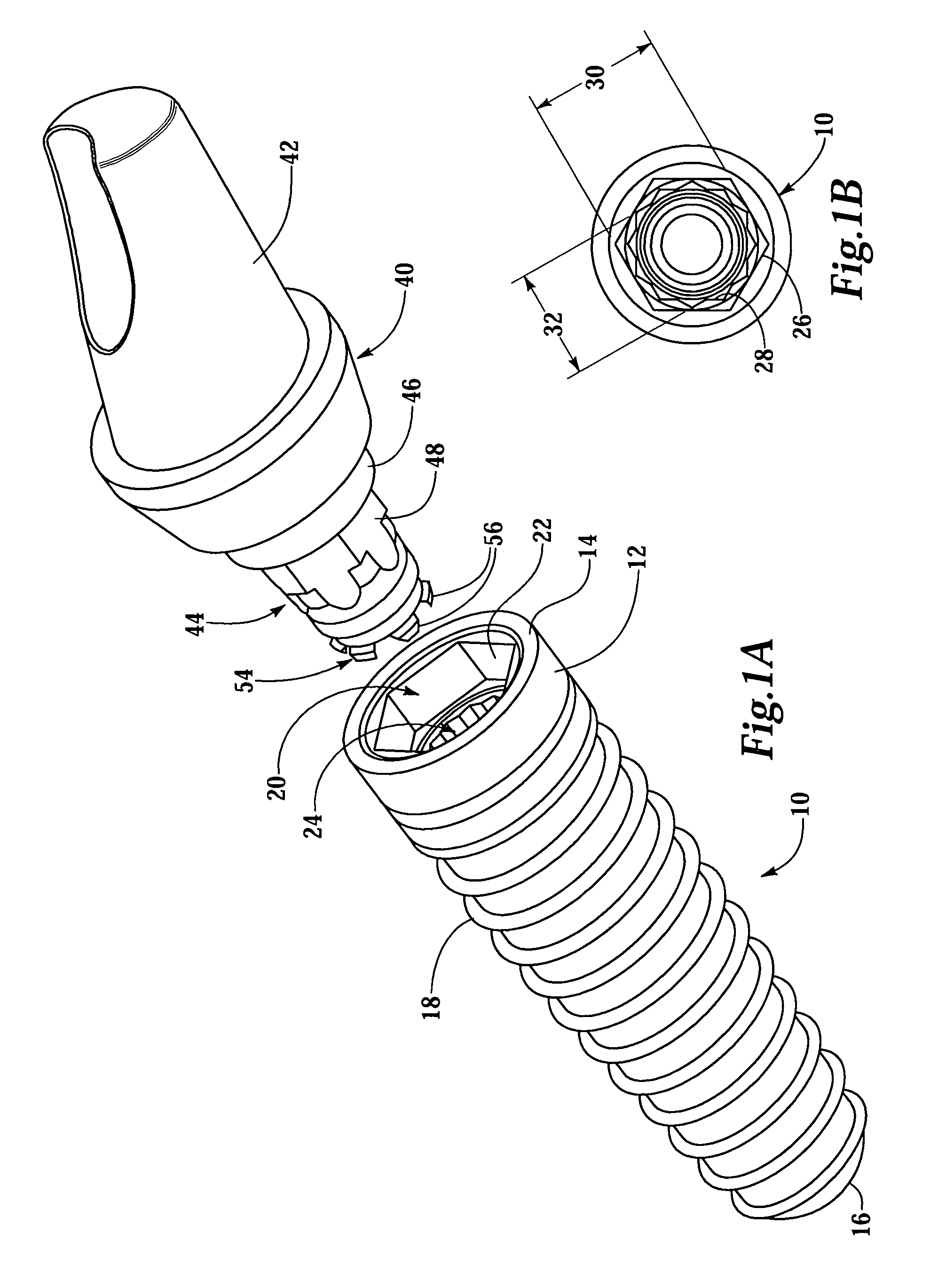Dental implant system
a technology applied in the field of dental implants and abutments, can solve the problems of difficult rotational alignment, difficult thread connection, and difficult thread bore operation,
- Summary
- Abstract
- Description
- Claims
- Application Information
AI Technical Summary
Benefits of technology
Problems solved by technology
Method used
Image
Examples
Embodiment Construction
[0036]FIGS. 1 and 2 illustrate an implant 10 adapted to be screwed into the bone of a patient and an abutment 40 adapted to be connected to the implant 10. The implant 10 comprises a proximal end 12 including a table 14 adapted to abut the abutment 40. The implant 10 comprises a distal end 16 opposite the proximal end 12 and at least one thread 18 disposed therebetween for screwing the implant 10 into the bone of a patient. An interior bore 20 extends distally from the proximal end 12 toward the distal end 16. The interior bore 20 comprises a first anti-rotation cavity 22 and a second anti-rotation cavity 24 distal of the first anti-rotation cavity 22.
[0037]In FIG. 1, the two cavities 22 and 24 are separate, distinct and slightly spaced apart, and are connected with a tapered section. Other arrangements, however, are equally suitable, such as, for example, where the cavities are adjacent and step-wise connected, or spaced apart and connected by one or more cavities.
[0038]Focusing on...
PUM
 Login to View More
Login to View More Abstract
Description
Claims
Application Information
 Login to View More
Login to View More - R&D
- Intellectual Property
- Life Sciences
- Materials
- Tech Scout
- Unparalleled Data Quality
- Higher Quality Content
- 60% Fewer Hallucinations
Browse by: Latest US Patents, China's latest patents, Technical Efficacy Thesaurus, Application Domain, Technology Topic, Popular Technical Reports.
© 2025 PatSnap. All rights reserved.Legal|Privacy policy|Modern Slavery Act Transparency Statement|Sitemap|About US| Contact US: help@patsnap.com



